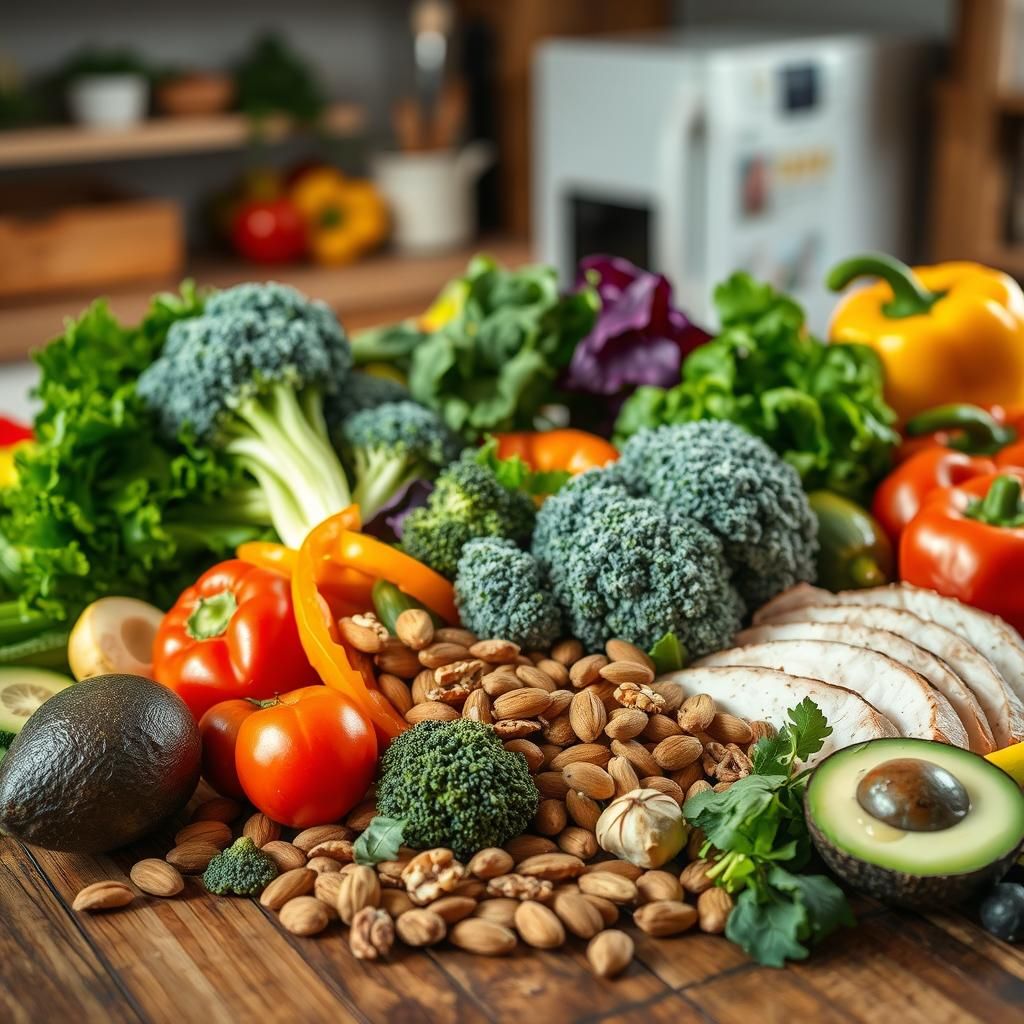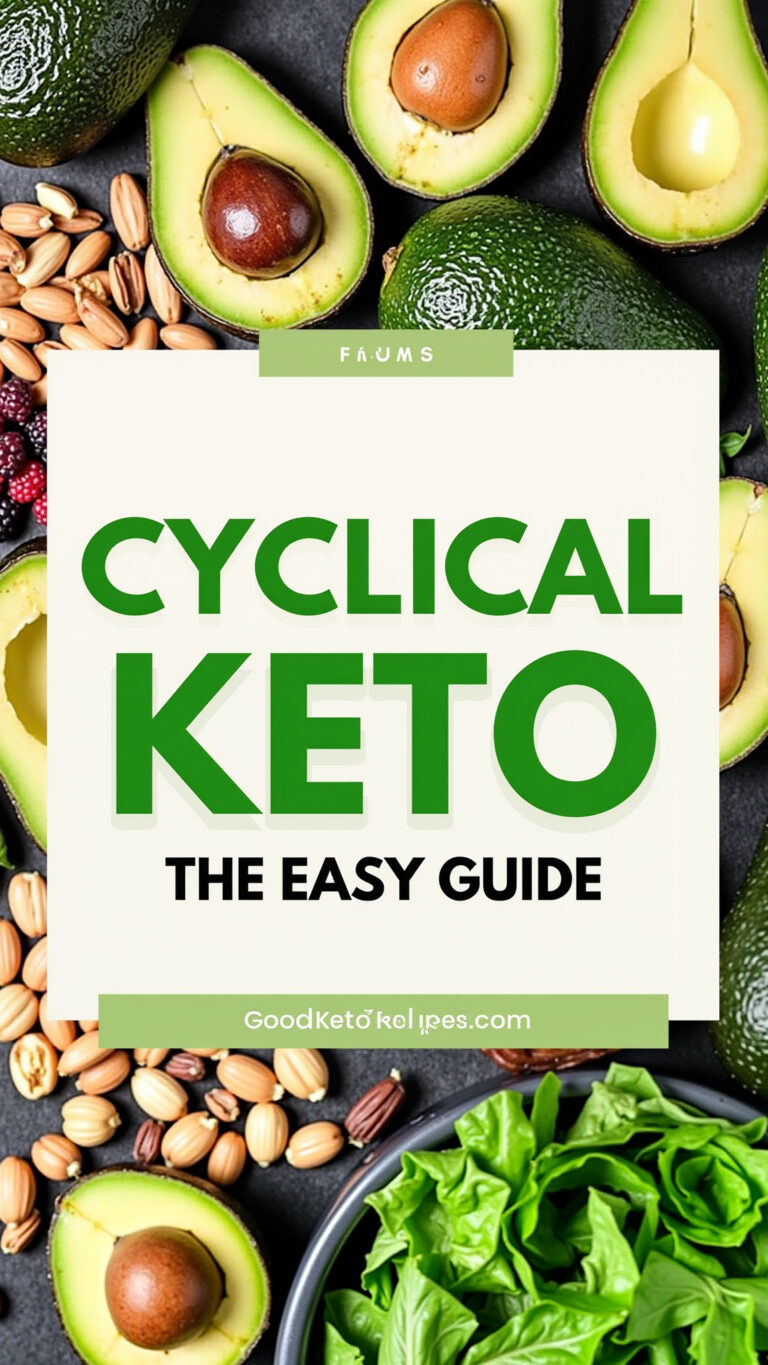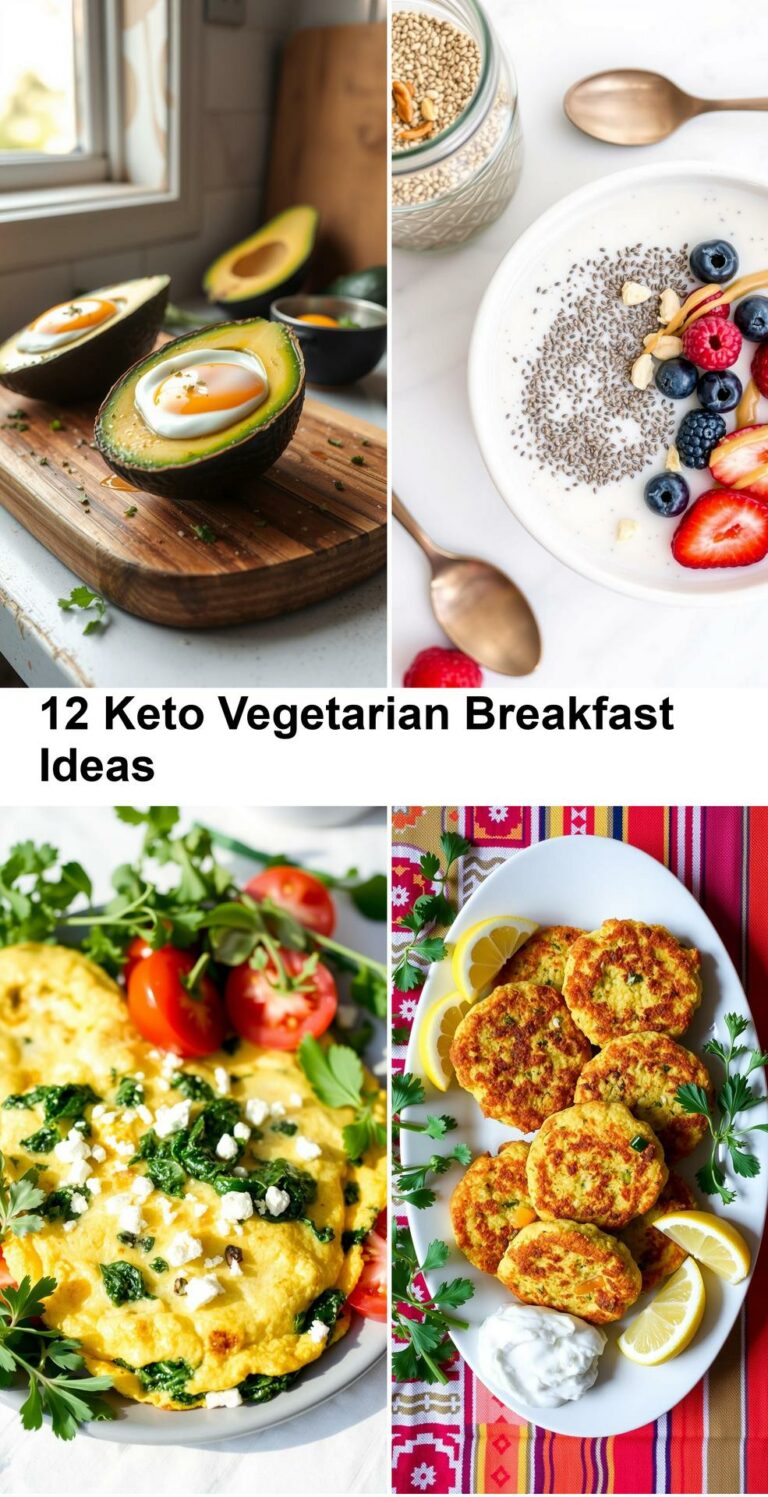30-Day Insulin Resistance Diet
Insulin resistance is a condition where your body’s cells don’t respond effectively to insulin, a hormone crucial for moving glucose (sugar) from your bloodstream into your cells for energy. When cells resist insulin, the pancreas produces more insulin to compensate. Over time, this can lead to elevated blood sugar levels, increasing the risk of prediabetes, type 2 diabetes, heart disease, and other health problems.
While genetics and lifestyle factors like inactivity play a role, diet is a powerful tool for improving insulin sensitivity and managing blood sugar. This 30-day insulin resistance diet plan provides a structured approach focusing on whole, unprocessed foods designed to stabilize blood sugar, reduce insulin spikes, and support overall metabolic health. It’s important to remember that this plan is a general guide and should be undertaken in consultation with a healthcare provider or registered dietitian, especially if you have existing health conditions or are taking medications.
Understanding Insulin Resistance and Diet
Dietary choices directly impact blood sugar levels and insulin response. Carbohydrates, in particular, break down into glucose, prompting insulin release. The type and amount of carbohydrates, as well as what they are eaten with (protein, fat, fiber), determine how quickly and high blood sugar rises.
A diet focused on improving insulin sensitivity aims to:
- Minimize rapid blood sugar spikes: By choosing low glycemic index (GI) carbohydrates.
- Increase fiber intake: Fiber slows sugar absorption and improves gut health, both beneficial for blood sugar control.
- Include adequate protein and healthy fats: These macronutrients have minimal impact on blood sugar and help promote satiety.
- Reduce processed foods and added sugars: These are major culprits for rapid blood sugar fluctuations and inflammation.
This 30-day plan incorporates these principles to help reset eating habits and establish a sustainable foundation for managing insulin resistance.
Principles of the 30-Day Plan
The core of this 30-day plan revolves around nutrient-dense foods that promote stable blood sugar and support healthy insulin function. Key principles include:
- Focus on Whole, Unprocessed Foods: Prioritize foods in their natural state – fresh vegetables, fruits, lean proteins, healthy fats, and some whole grains and legumes.
- Choose Low Glycemic Index (GI) Carbs: Select carbohydrates that cause a slower, lower rise in blood sugar. This includes most non-starchy vegetables, many fruits, legumes, and certain whole grains.
- Maximize Fiber Intake: Aim for a high-fiber diet (target 25-35 grams per day). Fiber is found in vegetables, fruits, legumes, nuts, seeds, and whole grains.
- Include Lean Protein with Every Meal: Protein helps stabilize blood sugar and increases satiety, reducing cravings. Sources include poultry, fish, eggs, tofu, tempeh, legumes, and Greek yogurt.
- Incorporate Healthy Fats: Fats like monounsaturated (olive oil, avocados, nuts) and polyunsaturated (fatty fish, seeds, walnuts) support cell function and hormone production without spiking blood sugar. Limit saturated and avoid trans fats.
- Limit Refined Sugars and Sweetened Beverages: These cause rapid and significant blood sugar spikes. This includes soda, fruit juice (even 100%), candy, pastries, and many processed snacks.
- Reduce Refined Grains: White bread, white rice, pasta, and baked goods made with white flour are low in fiber and can cause blood sugar surges. Opt for small portions of true whole grains if tolerated.
- Stay Hydrated: Drink plenty of water throughout the day. Water helps the kidneys flush out excess blood sugar and supports overall metabolic processes.
- Practice Portion Control: Even healthy foods need to be consumed in appropriate amounts to manage calorie intake and carbohydrate load.
- Regular Meal Timing: Eating meals and snacks at consistent times can help regulate blood sugar levels and manage hunger.
Foods to Include Generously
These foods form the foundation of the 30-day plan due to their low GI, high fiber content, and rich nutrient profiles.
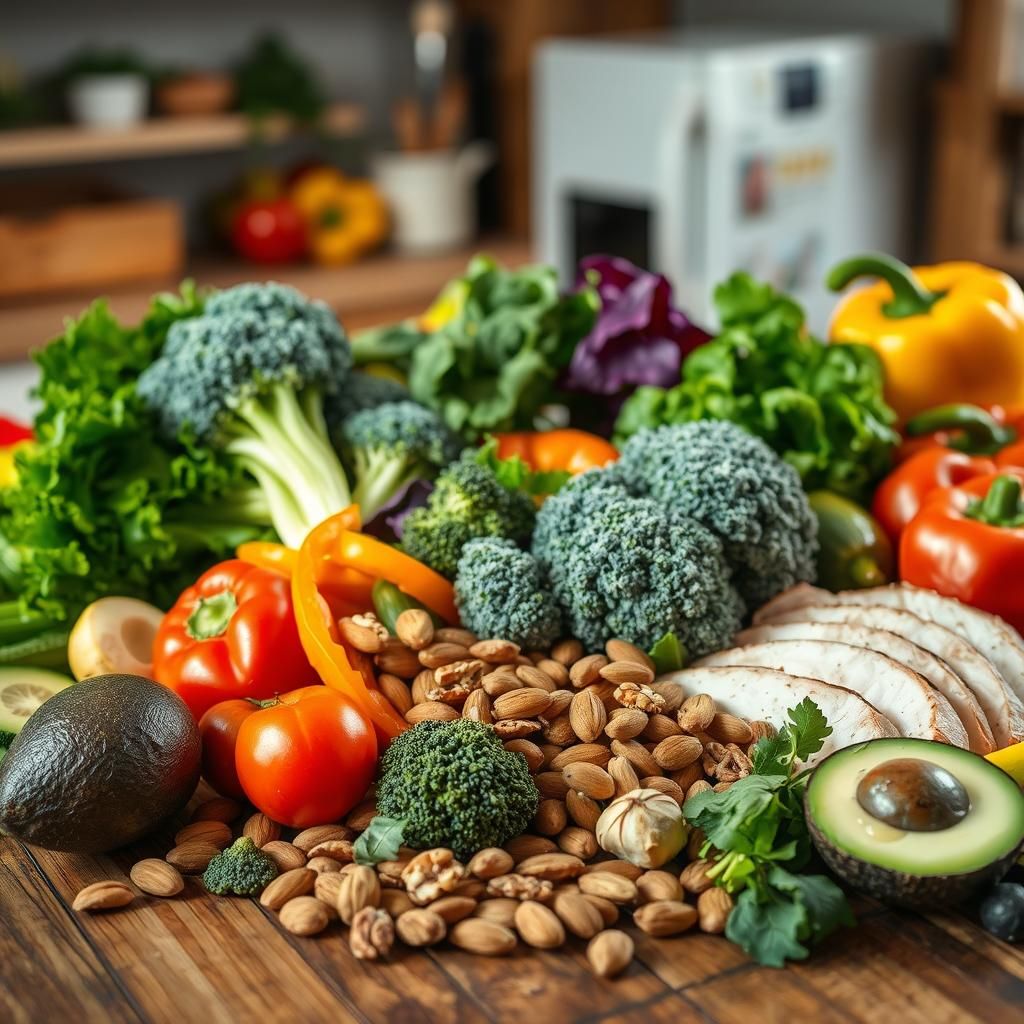
- Non-Starchy Vegetables:
- Leafy greens (spinach, kale, lettuce, collards)
- Broccoli, cauliflower, Brussels sprouts
- Peppers (bell peppers, jalapeños)
- Zucchini, cucumber
- Tomatoes
- Asparagus, green beans
- Mushrooms
- Onions, garlic
- Eggplant
- Lean Proteins:
- Chicken breast, turkey breast (skinless)
- Fish (salmon, mackerel, sardines, tuna, cod, tilapia) – especially fatty fish for omega-3s
- Eggs (whole eggs)
- Tofu, tempeh, edamame
- Lentils, beans (black beans, kidney beans, chickpeas) – counted as protein and complex carb
- Greek yogurt (plain, unsweetened)
- Cottage cheese (plain, unsweetened)
- Healthy Fats:
- Avocado, avocado oil
- Olive oil (extra virgin)
- Nuts (almonds, walnuts, pecans, macadamia nuts) – unsalted, raw or dry roasted
- Seeds (chia seeds, flaxseeds, pumpkin seeds, sunflower seeds)
- Nut butters (natural, unsweetened)
- Coconut oil (in moderation)
- Low-GI Fruits (in moderation):
- Berries (strawberries, blueberries, raspberries, blackberries)
- Apples, pears
- Cherries
- Grapefruit
- Avocado (also a fat source)
- Legumes:
- Lentils
- Chickpeas
- Black beans, kidney beans, cannellini beans
- Edamame
- Select Whole Grains (in small portions, check tolerance):
- Quinoa
- Oats (steel-cut or rolled, not instant)
- Brown rice, wild rice
- Barley
- Farro
- Whole-wheat bread (100% whole grain, check ingredients, limit servings)
- Beverages:
- Water (plain, sparkling)
- Unsweetened tea (green, black, herbal)
- Black coffee (in moderation, without sugar or sweetened creamers)
- Unsweetened almond milk, soy milk, or other unsweetened plant milks
Foods to Limit or Avoid
These foods can negatively impact insulin sensitivity and blood sugar control and should be significantly limited or eliminated during the 30 days.
- Refined Sugars and Added Sugars:
- Soda and other sugar-sweetened beverages (juice, sports drinks, sweetened teas)
- Candy, chocolate (unless very dark, unsweetened)
- Baked goods (cakes, cookies, pastries, muffins)
- Ice cream, frozen yogurt (unless sugar-free)
- Sweeteners like high fructose corn syrup, sucrose, glucose, dextrose (check labels)
- Agave nectar, maple syrup, honey (use sparingly if at all)
- Refined Grains:
- White bread, rolls, bagels
- White rice
- Pasta (made from white flour)
- Cereals (most breakfast cereals, especially sugary ones)
- Crackers, pretzels (unless whole grain/seed-based with low sugar)
- Baked goods made with white flour
- Processed Foods:
- Packaged snacks (chips, most cookies, granola bars with added sugar)
- Processed meats (hot dogs, bacon, deli meats high in nitrates and salt)
- Fast food
- Frozen meals high in sodium, unhealthy fats, and refined carbs
- Unhealthy Fats:
- Trans fats (partially hydrogenated oils – found in some margarines, fried foods, baked goods)
- Excessive saturated fats (fatty cuts of meat, butter, full-fat dairy – limit but small amounts are generally okay)
- High-GI Fruits (limit portion size):
- Watermelon, pineapple, ripe bananas, dates, dried fruit (very concentrated sugar)
- Sweetened Dairy:
- Sweetened yogurt, flavored milk, ice cream
- Excessive Starchy Vegetables:
- White potatoes, sweet potatoes, corn, peas (manage portions carefully if included)
Structuring Your 30 Days
Implementing the plan requires preparation and consistency. Here’s a possible structure:
- Week 1: Reset and Stock Up:
- Educate yourself further about insulin resistance.
- Clean out your pantry and fridge, removing tempting processed foods, sugary drinks, and refined grains.
- Make a detailed shopping list based on the “Foods to Include” list.
- Stock up on staples like olive oil, nuts, seeds, canned beans, frozen vegetables, and lean proteins.
- Plan your meals for the first week. Focus on getting comfortable with the new food choices and portion sizes. Don’t strive for perfection, aim for consistency.
- Week 2: Meal Prep and Recipes:
- Experiment with meal prepping. Cook larger batches of protein (grilled chicken, roasted chickpeas), chop vegetables, and prepare bases like quinoa or lentils for quick assembly.
- Find simple, delicious recipes that fit the plan.
- Pay attention to how different foods make you feel. Note energy levels, cravings, and digestive comfort.

Looking for specific recipes or meal plans? Check out this resource: 500 Delicious Keto Recipes Cookbook.
- Week 3: Consistency and Activity:
- By now, the food choices should feel more natural. Focus on maintaining consistency with meals and snacks.
- If you haven’t already, start incorporating regular physical activity (even a 20-30 minute walk daily helps!). Exercise significantly improves insulin sensitivity.
- Troubleshoot any challenges (eating out, social events – see tips below).
- Week 4: Sustain and Plan Ahead:
- Reflect on your progress. How do you feel? Have any symptoms improved (energy, cravings, mood)? Note: Significant metabolic changes like A1C improvements typically take longer than 30 days, but you might notice subjective improvements.
- Plan how you will maintain these healthy habits beyond the 30 days. The goal is a sustainable lifestyle change, not a temporary fix.
- Schedule a follow-up with your healthcare provider to discuss your progress and next steps, which may include blood tests.
Considering a Keto approach? Explore options like a Custom Keto Diet or The Ultimate Keto Meal Plan.
Sample Daily Meal Plan Examples
This is a template; feel free to mix and match based on your preferences and ingredients. Remember to adjust portion sizes based on your individual calorie and macro needs, ideally guided by a professional.
Need more structured plans? A 30 DAY KETO MEAL PLAN might offer helpful ideas.
Day 1
- Breakfast: Scrambled eggs (2-3) with spinach and mushrooms, side of avocado slices.
- Lunch: Large salad with mixed greens, grilled chicken or chickpeas, cucumber, tomatoes, peppers, 1/4 avocado, dressed with olive oil and vinegar.
- Snack: Small handful of almonds or walnuts.
- Dinner: Baked salmon with roasted broccoli and asparagus.
- Optional Snack: Plain Greek yogurt with a few berries and chia seeds.
Day 2
- Breakfast: Plain Greek yogurt (full fat or 2%) with a small amount of berries and 1 tablespoon of chia seeds or ground flaxseed.
- Lunch: Leftover baked salmon and roasted vegetables.
- Snack: Cucumber slices with hummus (check ingredients for added sugar).
- Dinner: Lentil soup (homemade with lots of vegetables, no added sugar) and a small side salad.
Thinking about easy meals like soups? Check out the Keto Soup Detox.
Day 3
- Breakfast: Smoothie made with unsweetened almond milk, spinach, 1/2 cup berries, 1 scoop protein powder (unsweetened), and 1 tablespoon nut butter.
- Lunch: Tuna salad (made with avocado or Greek yogurt instead of mayo) in lettuce wraps with sliced tomatoes.
- Snack: Hard-boiled egg.
- Dinner: Turkey or chicken stir-fry with lots of non-starchy vegetables (broccoli, peppers, snap peas) and a small serving of quinoa (1/2 cup cooked). Use tamari or coconut aminos instead of soy sauce.
Day 4
- Breakfast: Chia seed pudding (made with unsweetened almond milk and chia seeds, sweetened with a tiny bit of stevia if needed, topped with a few berries).
- Lunch: Leftover stir-fry.
- Snack: Apple slices with a tablespoon of natural peanut butter.
- Dinner: Baked cod with sautéed green beans and wild rice (small portion, ~1/3 cup cooked).
Day 5
- Breakfast: Omelet with cheese (if tolerated) and various vegetables (peppers, onions, spinach).
- Lunch: Salad with mixed greens, canned sardines or mackerel, tomatoes, olives, and olive oil/lemon dressing.
- Snack: Small handful of pecans and a few olives.
- Dinner: Ground turkey or beef lettuce wraps with spiced ground meat, shredded carrots, and a side of cauliflower rice.
Day 6
- Breakfast: Plain cottage cheese with sliced tomatoes and black pepper.
- Lunch: Leftover lettuce wraps.
- Snack: Bell pepper strips with guacamole.
- Dinner: Chicken breast roasted with herbs, side of steamed broccoli and a small baked sweet potato (~1/2 medium). Note: Sweet potatoes are higher GI than non-starchy veg, so portion control is key.
Day 7
- Breakfast: Scrambled tofu with turmeric and vegetables.
- Lunch: Large salad with mixed beans (chickpeas, kidney beans) and lots of chopped vegetables, olive oil/vinegar dressing.
- Snack: A handful of edamame (steamed).
- Dinner: Pork tenderloin with Brussels sprouts roasted with olive oil and garlic.
Looking for tasty meals that fit a structured approach? Consider The Keto Diet guide.
Repeat and vary these types of meals for the full 30 days.
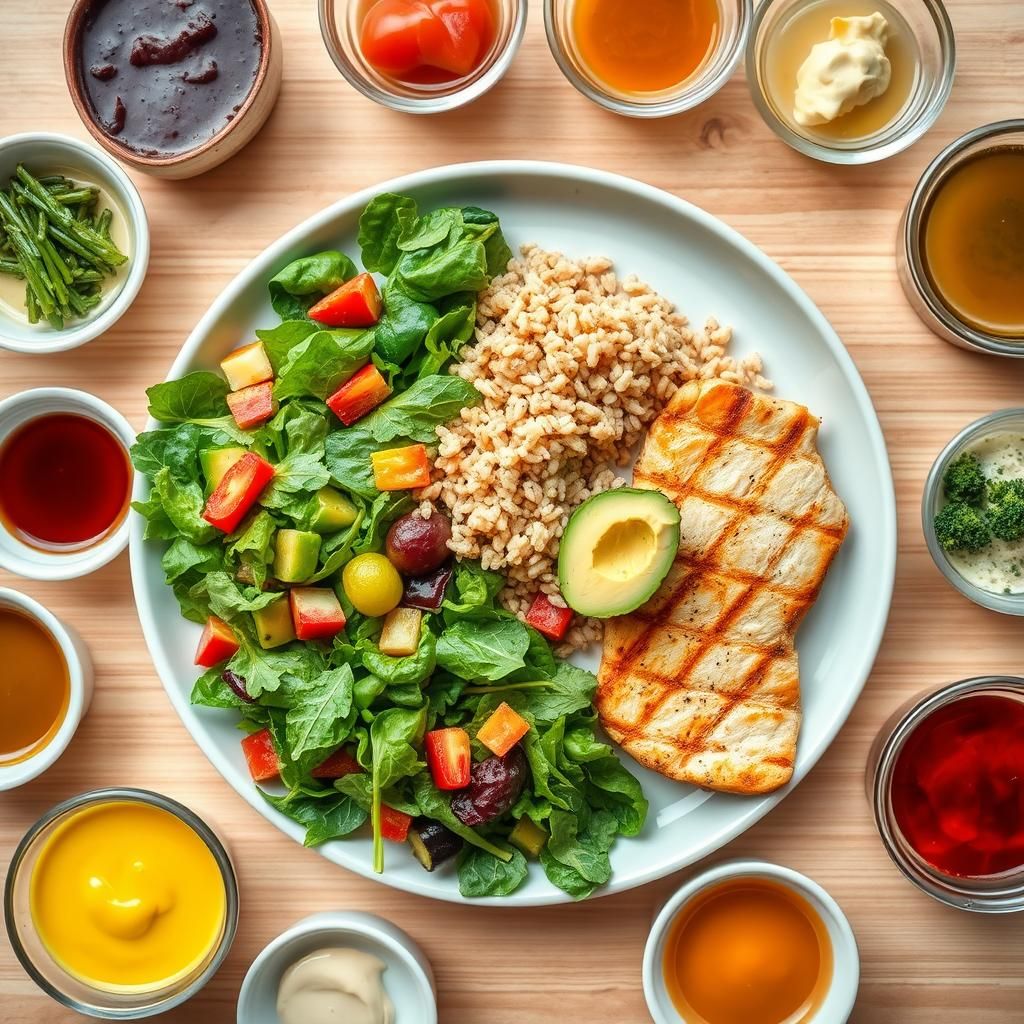
Beyond the Plate: Lifestyle Factors
Diet is crucial, but lifestyle plays a significant supporting role in improving insulin sensitivity.
- Exercise: Regular physical activity, combining aerobic exercise (like walking, jogging, swimming) and strength training, is incredibly effective at helping cells use glucose and improving insulin sensitivity. Aim for at least 150 minutes of moderate aerobic activity or 75 minutes of vigorous activity per week, plus strength training at least two days a week.

- Sleep: Poor sleep disrupts hormone balance, including insulin and cortisol, negatively impacting blood sugar control. Aim for 7-9 hours of quality sleep per night.
- Stress Management: Chronic stress can raise cortisol levels, which can increase blood sugar. Practice stress-reducing techniques like mindfulness, meditation, yoga, deep breathing, or spending time in nature.

- Hydration: As mentioned, drinking enough water is vital for metabolic health and helps manage blood sugar.
- Quit Smoking: Smoking worsens insulin resistance and increases the risk of complications.
Tracking Your Progress
Monitoring how you feel and potential objective markers can provide valuable motivation and insight.
- Subjective Tracking: Keep a food diary. Note what you eat, when, and how you feel afterward (energy levels, cravings, mood, digestion). This helps identify patterns and triggers. Note changes in weight or waist circumference.
- Objective Tracking (with medical supervision): The most accurate way to track the impact on insulin resistance is through blood tests ordered by your doctor. While 30 days might not show dramatic shifts in A1C or fasting insulin for everyone, it’s a great starting point. Your doctor might recommend tests after 2-3 months on the plan.
Common Challenges and Tips
Making dietary changes can be tough. Here are some tips to navigate common hurdles:
- Cravings: Focus on nutrient-dense meals with plenty of protein and fiber to stay full. Keep healthy snacks on hand. If cravings strike, try having a glass of water or engaging in a distracting activity. Sometimes, a small portion of a healthy fat like nuts or avocado can help. Check out a Keto Snack Cookbook for ideas.
- Eating Out: Plan ahead. Look at restaurant menus online. Choose meals with lean protein and non-starchy vegetables. Ask for sauces and dressings on the side. Avoid bread baskets, sugary drinks, and fried foods. Don’t be afraid to ask for substitutions (like double vegetables instead of fries or rice).
- Social Events: Offer to bring a dish that fits your plan (like a large salad or vegetable platter). Eat a healthy snack beforehand so you’re not starving. Be selective about what you eat and drink. It’s okay to have small amounts, but be mindful. Focus on conversation over food.
- Lack of Time: Meal prepping is key! Dedicate a few hours on a weekend to cook staples. Choose simple recipes that don’t require much preparation. Keep easy-to-assemble meals in mind (e.g., canned fish with salad, pre-cooked chicken strips with bagged salad). An Keto Air Fryer Cookbook might help with quick meals.
- Feeling Deprived: Focus on the abundance of delicious foods you can eat rather than the few you’re limiting. Experiment with new recipes and cuisines. Healthy eating doesn’t have to be boring! If you miss baked goods, consider a Keto Breads and Pizza recipe book or a Keto Dessert Book for healthier alternatives.
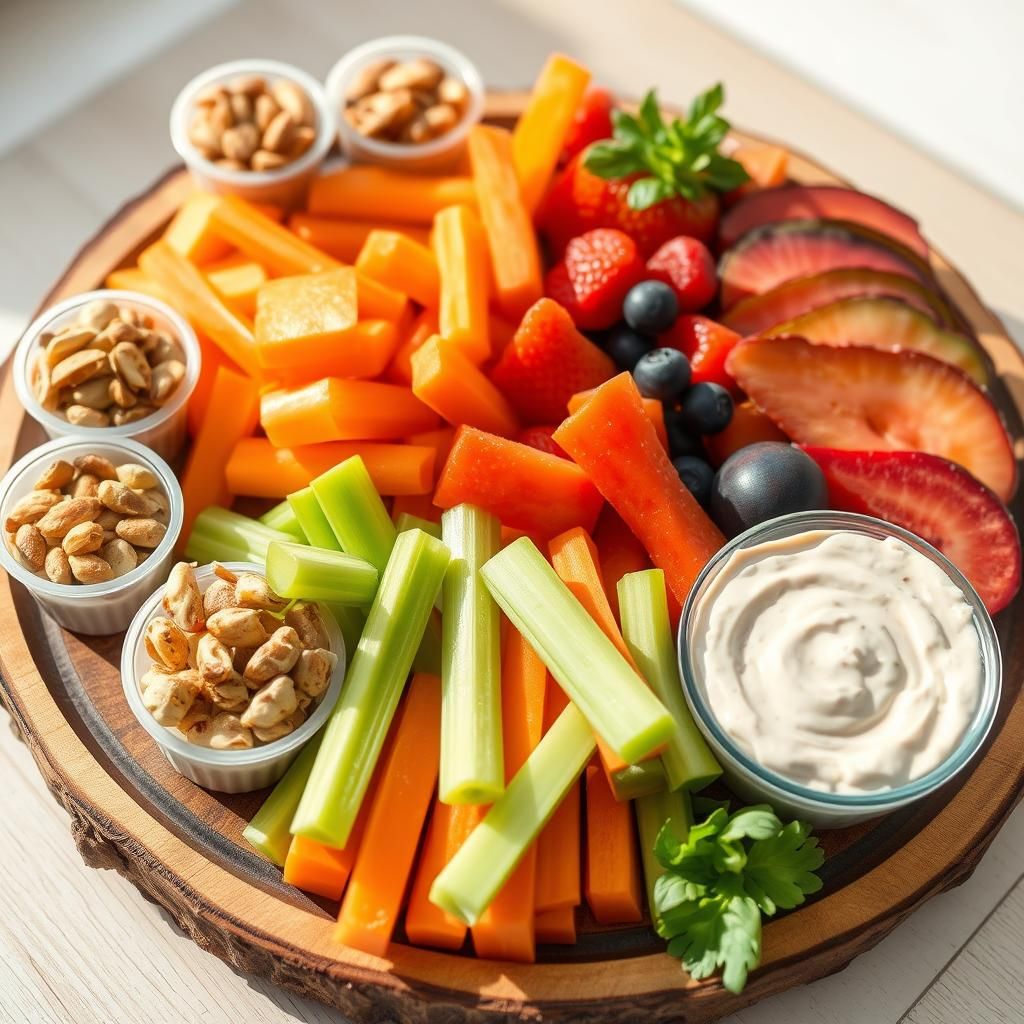
Is This Plan Sustainable?
The goal of the 30-day plan is to kickstart better habits and educate you on how different foods affect your body. It’s not meant to be a strict, temporary diet but a foundation for a sustainable lifestyle. After 30 days, you can continue following these principles, perhaps allowing for occasional, planned deviations in moderation. The key is consistency over time. Listen to your body, notice what works for you, and make adjustments as needed.

Consulting Your Healthcare Provider
This 30-day plan is an informational guide and not a substitute for professional medical advice. It is crucial to consult with your doctor before starting any new diet plan, especially if you have insulin resistance, prediabetes, diabetes, or any other health condition, or if you are taking medications (particularly for diabetes, blood pressure, or cholesterol), as your medication dosage may need adjustment. A registered dietitian can also provide personalized meal plans and guidance based on your specific needs, preferences, and health status.
Taking control of your diet is one of the most effective steps you can take to improve insulin sensitivity and manage the risks associated with insulin resistance. This 30-day plan offers a practical framework focused on nutrient-dense, whole foods that stabilize blood sugar and support metabolic health. By prioritizing non-starchy vegetables, lean proteins, healthy fats, and fiber, while limiting refined sugars and processed foods, you can make significant strides toward better health. Combine this dietary approach with regular exercise, sufficient sleep, and stress management for the best results. Commit to these 30 days as a powerful starting point, work closely with your healthcare team, and build sustainable habits for long-term well-being.
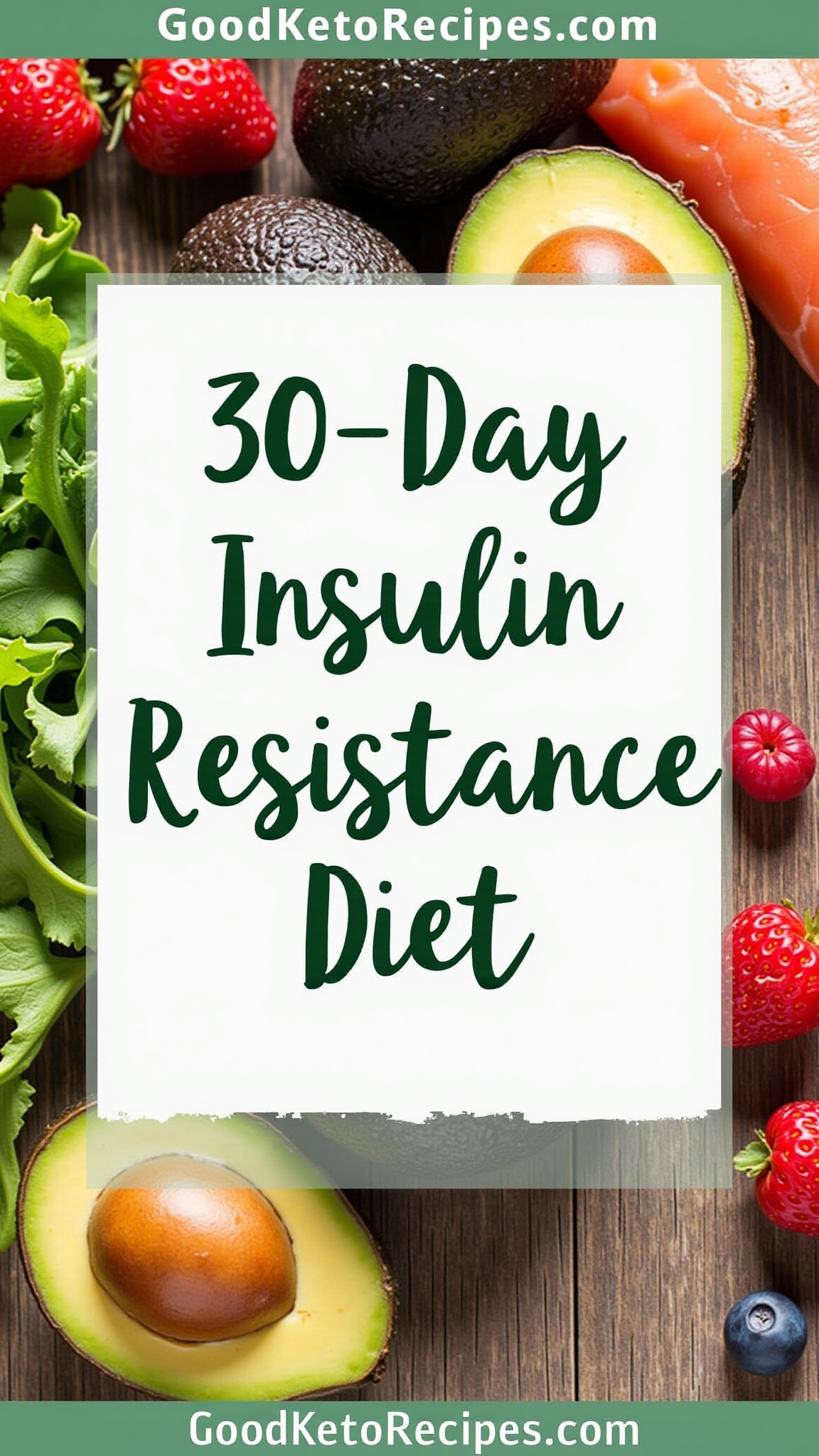
Affiliate Link Disclosure: Some of the links in this post are affiliate links. This means that if you click on the link and make a purchase, I may receive a small commission at no extra cost to you. I only recommend products or services that I personally use and believe will be valuable to my readers.
